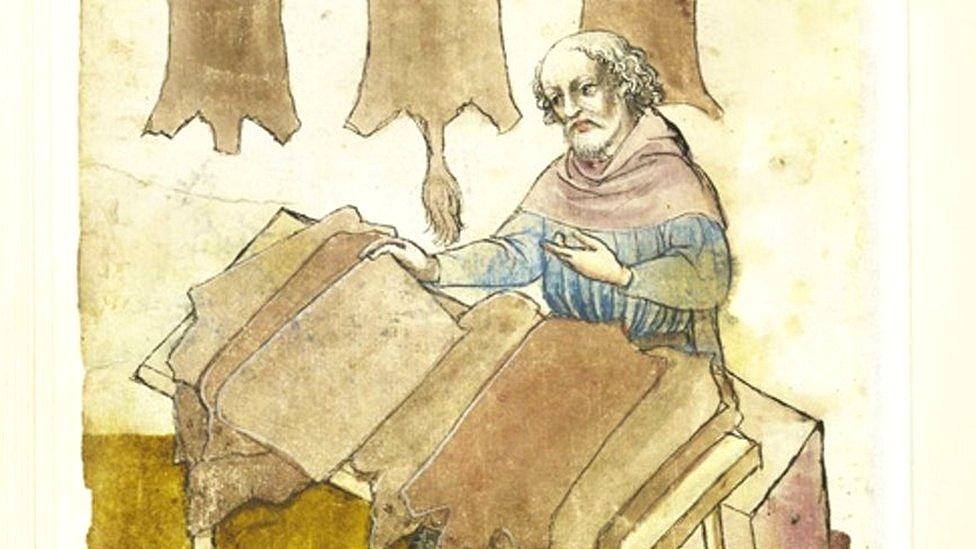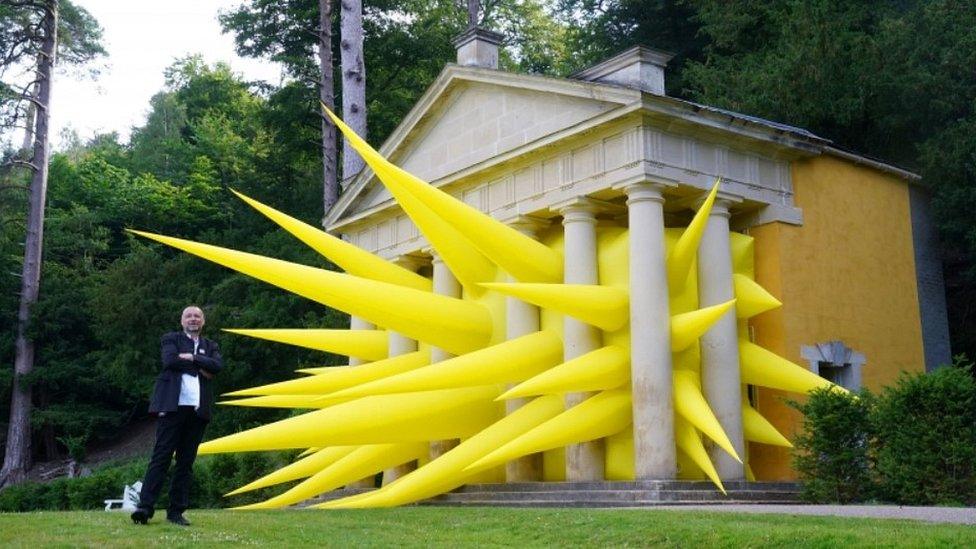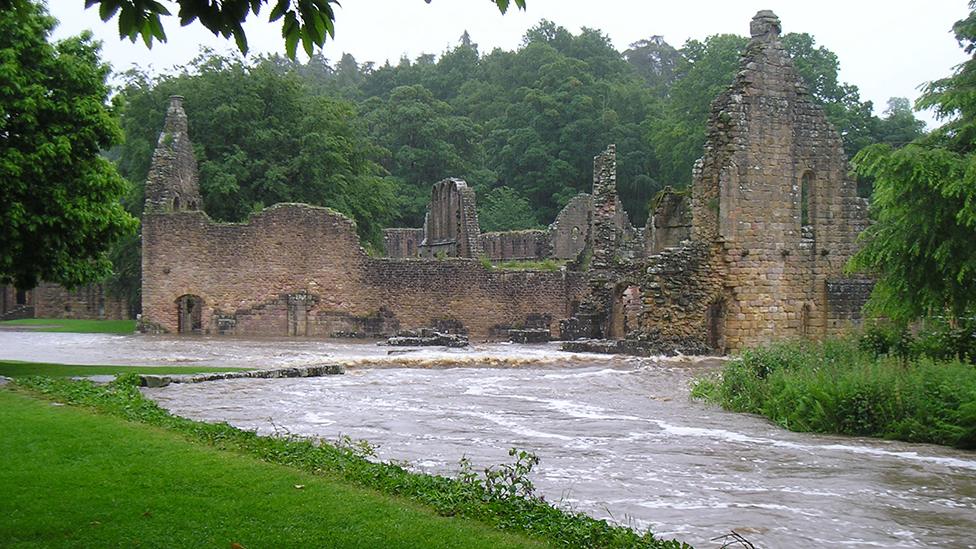Fountains Abbey: Radar reveals largest monastery tannery
- Published

A man involved in the leather industry is depicted sorting skins after drying
Archaeologists have solved a centuries-old mystery by identifying the largest tannery ever found at a British monastery, the National Trust has said.
The discovery at Fountains Abbey, near Ripon, has provided a "missing link" in the history of the Cistercian community that worshipped and worked there.
Ground-penetrating radar revealed two large stone buildings with lined pits close to the River Skell.
Archaeologist Mark Newman said the findings were "on an industrial scale".
The remains of the stone building are about 50ft (16m) wide and one is at least 100ft (32m) long and was more than one storey high.
The National Trust said "it had always been a puzzle what a long 'bowling alley'-type extension of the Fountains Abbey precinct could have been used for".
With pits, tanks and other structures and close to the river for water - a key requirement for the tanning process - the Trust has concluded it was a tannery.
Mr Newman, who works for the Trust, said: "A tannery of this size, spanning such a large area of the site, reveals an operation on an industrial scale."
He said the size of the complex "really takes one aback".
"The Cistercians - and especially the community at Fountains - were pioneering farmers and land managers," he added.

Animal hides processed at the tannery would have been used to make leather for clothing, bedding and book bindings
Tanning was vital for the abbey economy and animal hides would have been used to make leather for clothing, bedding, book bindings and vellum or parchment for scribes to produce religious texts.
With the noise and smells produced by a tannery archaeologists had thought it would have been further away from the monks' place of worship.
Hilary McGrady, Director-General of the National Trust, said the discovery had "provided a 'missing link' and represents some key named buildings the team wanted to identify on the site".
It is thought the tannery remained in operation until 1539 and Henry VIII's Dissolution of the Monasteries as part of his reformation of the church.

Ground-penetrating radar at the University of Bradford revealed unexpected signs of the tannery buildings

Follow BBC Yorkshire on Facebook, external, Twitter, external and Instagram, external. Send your story ideas to yorkslincs.news@bbc.co.uk, external.
Related topics
- Published10 July 2021

- Published13 January 2021
